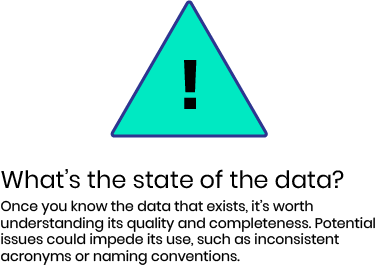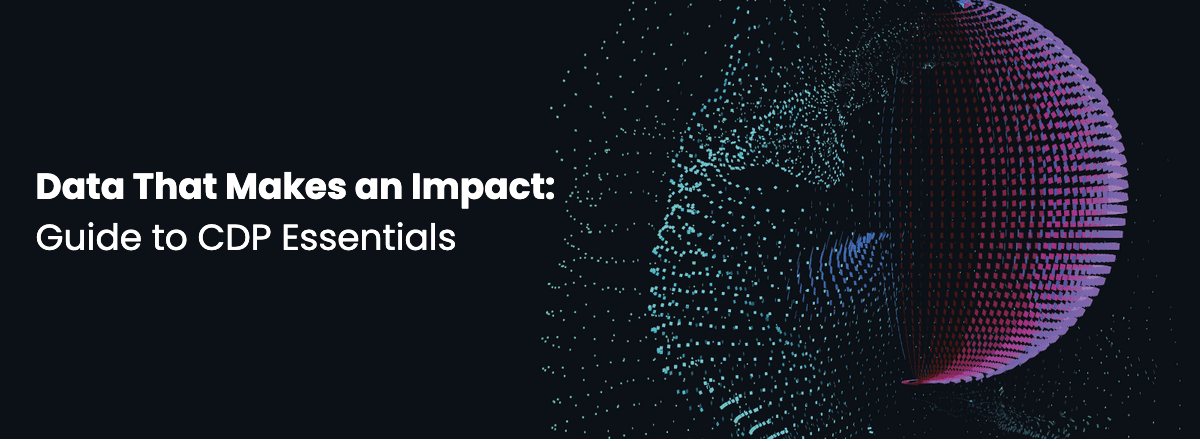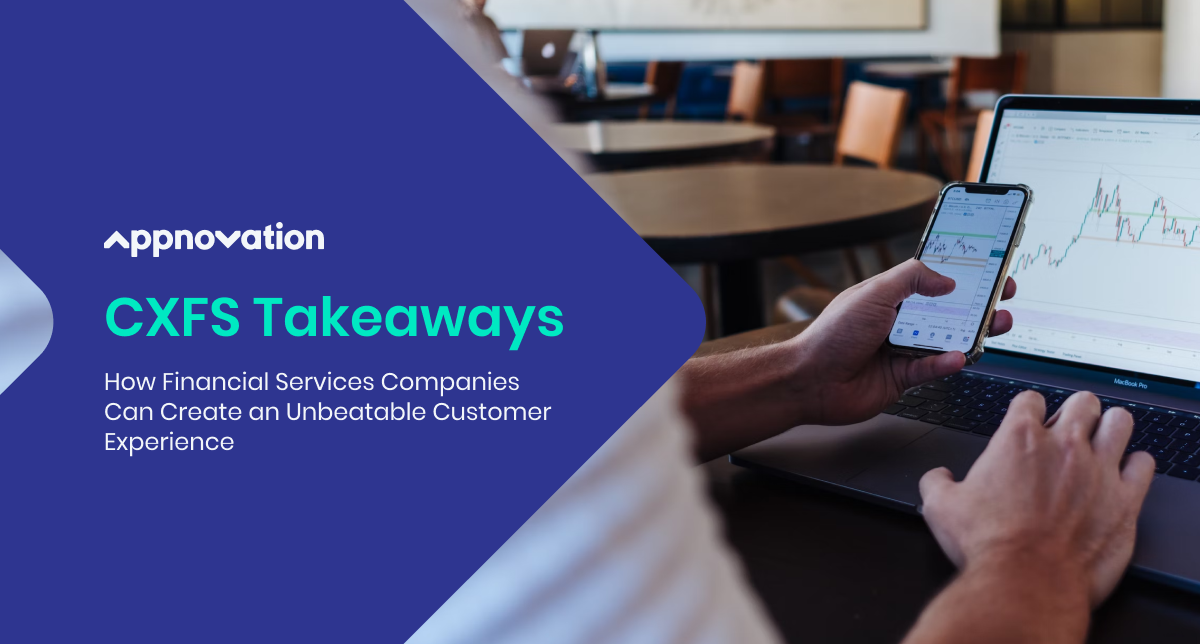This series explores the journey towards becoming a data-driven business, harnessing the power of good-quality metrics to make informed decisions.
This is the first article, which covers strategies for deciding where to start a data transformation, as well as methods to get going quickly.
It used to be that companies were largely sales driven, but the tides have shifted and these days, it’s all about the customer experience. According to a survey conducted by Insider Intelligence, 88% of customers feel that their experience of a brand is equally as important as the brand’s product or service. The same research showed that more than half of consumers expect offers to be personalized.
Companies know they need to provide personalized experiences for their customers and that solid data is pivotal, but where should they begin their transformation? The obvious answer, of course, is at the beginning. But where is that, exactly?
Find your starting point
When contemplating a data transformation, the first place to start is with a deceptively simple question: What are you trying to achieve? Everything stems from that.
Don’t let anticipated results overshadow the intention of the data. For instance, you may know you want personalization, but what do you want personalized? Or you want a data lake. Okay. But what for? Perhaps you’re keen to evolve your tech stack. To what end?
While striving to answer these basic questions, it’s likely the list of desired use cases will be lengthy. You’ll have to prioritize, but the aim isn’t to map out everything that needs to be done. It’s to pinpoint the objectives that will most expediently deliver the highest value.
Conversations tend to center around what’s needed instead of why it’s needed. But understanding the data’s ultimate purpose helps ensure you design the best, most impactful solution for your business. Don’t let the train leave the station before there’s consensus on why it’s moving in the first place.
Discover quick wins
Getting to the heart of your data’s intended purpose usually requires some discovery to gain an understanding of your current environment, data sources, stakeholders, department processes, requirements, interactions and more.
The discovery process can seem overwhelming when you consider all the information that must be gathered, but it doesn’t have to be a daunting process. There are ways to apply quick wins when it comes to recognizing your objectives and determining where to begin your data project.
Fast assessment
Discovery can take the better part of a year depending on the complexity of the initiative, but there is a quicker option: a fast assessment. It’s similar to a formalized due diligence process, but is structured as a two-day workshop. The approach is an ideal way to collect all the information necessary to jumpstart a data project and can lead to a better understanding of the main objectives.
Appnovation held a rapid assessment for a company that wanted to see how various channels were contributing to their ROI. During the session, we conducted a gap analysis on their data to ensure all the relevant marketing variables were being tracked, while also evaluating their back-end data. The exercise positioned them to initiate a project with an outcome of using their data to make better business decisions about their marketing spend.
Activities and outputs
It’s not uncommon to stumble upon revelations that can threaten to delay the discovery process. To avoid that happening, we root our discovery in a set of activities and outputs, so it’s clear what the goals are at every stage. For example, if “stakeholder ideation sessions” is one of the activities, the output would be “a list of prioritized use cases.” Having a well-defined roadmap helps manage expectations, and keeps everyone focused on the goal of the effort.
While preparing to build a data lake strategy with an award-winning tourism brand, we identified six key activities and associated outputs, which led to clear definitions of the data’s purpose, including:
• Improving how they measured visitor behavior and spend
• Mapping a greater breadth of community and partner assets
• Informing customer messaging
Prepare with some pondering
Figuring out where to start a personalization effort may not be completely straightforward, but nor is it as random as throwing a dart at a framework and saying, “Here.”
To help set you up for success, we’ve outlined some key areas to consider as you prepare for a data transformation. The more clarity you’re able to unearth about the following topics, the more clearly the starting point will emerge. And while it can be tempting to expect external partners to define which metrics or data you should care most about, it’s worth forming some ideas of your own. After all, there’s truth to the adage that nobody can ever really know you better than you know yourself.
Get aligned
The discovery process can be enlightening, especially as it tends to uncover discrepancies in how teams define terms. It’s not unusual for people to assume a high-value metric means one thing, when it actually means something very different. For example, a varied understanding of terms such as “likes,” “impressions” and “downloads” could lead to an organization measuring the cost of downloads incorrectly, which could impact their bottom line. Even seemingly fundamental terms often need to be clarified. Poorly defined metrics can have a big impact on business direction.
For a leading financial company, the discovery phase revealed that they didn’t have a singular definition for their primary customer group. Without alignment on this crucial detail, it was difficult to effectively connect disparate datasets and gain understanding on how customers were navigating between channels.
Know your data
Once you’ve identified the primary insights and capabilities needed, take some time to consider the data that will fulfill those requirements, by asking three key questions:



To avoid falling into “analysis paralysis,” keep the data’s main purpose front and center.
Review your tech stack
No matter the purpose you’ve identified for your data, whether it’s better visibility into how marketing drives sales, a single customer view or more insight into your customer journey touchpoints, the inevitable next question is, do you have the tech stack needed to support these goals? Usually, the answer is ‘no.’
Gaining a foothold on your architectural framework will help identify gaps. Some aspects worth considering include:
• Requirements - Are there any system or non-functional requirements, or possible constraints, that could influence the project scope?
• Security - What permissions, API or third-party communications, certificates, PCI/PII, or encryptions should be taken into account?
• Application - Are there any specific architectural needs, especially in regard to capabilities configuration, scalability, and performance?
• Integration - Will there be any distinct platform integrations where data is pushed to or pulled from the primary application?
• Infrastructure - Is the environment adequately set up to support system maintenance, disaster recovery and failover?
• Governance - How will data integrity, synchronization, migration and maintenance be handled in the system?
Reviewing these details during the discovery phase will bring structure to the data solution and ensure the transformation remains aligned with the organization’s technology roadmap.
Embrace a product mindset
The data solution you’re building is about more than just completing a project, it’s about adopting a whole new mindset. A product mindset facilitates continuous improvement and evolution; it’s worth making the shift from the outset and recognizing what you’re taking on. It’s a commitment, definitely, but one that will allow you to keep pace with the rapidly shifting needs of your team and your customers, advancing your business for many years to come.
Ultimately, the final output of the discovery phase is to have an actionable implementation roadmap that defines your organization’s baseline and the level of investment required, for both the team and the technology. Once all of that is determined… you’re ready to start your data transformation.
The considerations covered here can help you zero in on your data’s purpose so you can be up and running before you know it, and more importantly, be using your data to gain business value. To learn more about how Appnovation can help kick start your data transformation, get in touch.
In the second article of this series, we’ll look at strategies for advancing your organization’s data maturity.
Download the series guide:

In this guide we cover the essentials of CDPs, including the difference between the two main uses of CDPs, the level of data cleanliness needed for each CDP use case, and the approach for using CDPs to collect first-party data.


